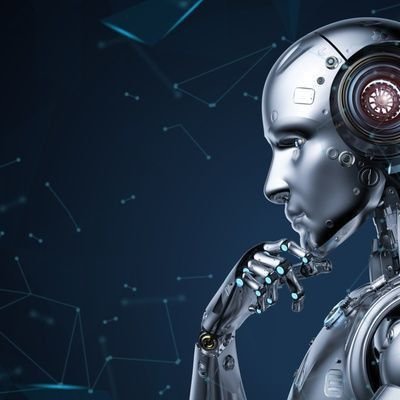
Machine learning, a subset of artificial intelligence, involves training algorithms to learn from data and make predictions or decisions without being explicitly programmed. Two fundamental types of machine learning are supervised and unsupervised learning. Understanding the key differences between these two approaches is essential for selecting the appropriate method for a given problem. This article explores the main distinctions between supervised and unsupervised learning, their applications, and their advantages and disadvantages.
Supervised Learning
Supervised learning involves training a machine learning model on a labeled dataset, which means that each training example is paired with an output label. The goal of supervised learning is to learn a mapping from inputs to outputs so that the model can predict the output for new, unseen inputs.
Key Characteristics of Supervised Learning:
1. Labeled Data:
– The dataset used in supervised learning consists of input-output pairs. Each input is associated with a corresponding output label, which the model aims to predict.
2. Training Process:
– The model is trained by adjusting its parameters to minimize the difference between the predicted outputs and the actual outputs in the training data. This process is known as training or learning.
3. Types of Problems:
– Supervised learning is typically used for classification and regression problems.
– Classification: Predicting a discrete label or category. Example: Email spam detection (spam or not spam).
– Regression: Predicting a continuous value. Example: Predicting house prices based on features like size and location.
4. Performance Evaluation:
– The performance of supervised learning models is evaluated using metrics such as accuracy, precision, recall, F1-score (for classification), and mean squared error (for regression).
Examples of Supervised Learning Algorithms:
1. Linear Regression
2. Logistic Regression
3. Decision Trees
4. Support Vector Machines (SVM)
5. Random Forests
6. Neural Networks
Unsupervised Learning
Unsupervised learning involves training a machine learning model on a dataset without labeled outputs. The goal is to find hidden patterns or intrinsic structures in the input data.
Key Characteristics of Unsupervised Learning:
1. Unlabeled Data:
– The dataset used in unsupervised learning consists of input data without associated output labels. The model tries to learn the underlying structure from the data itself.
2. Training Process:
– The model learns by identifying patterns, groupings, or features in the input data. There is no explicit feedback or correction based on output labels.
3. Types of Problems:
– Unsupervised learning is typically used for clustering, association, and dimensionality reduction.
– Clustering: Grouping similar data points together. Example: Customer segmentation in marketing.
– Association: Finding relationships between variables in a dataset. Example: Market basket analysis in retail.
– Dimensionality Reduction: Reducing the number of features in a dataset while preserving important information. Example: Principal Component Analysis (PCA).
4. Performance Evaluation:
– Evaluating unsupervised learning models can be challenging since there are no ground truth labels. Techniques like silhouette score, Davies-Bouldin index, and visual inspection are commonly used for clustering. For dimensionality reduction, the preservation of variance or reconstruction error is considered.
Examples of Unsupervised Learning Algorithms:
1. K-Means Clustering
2. Hierarchical Clustering
3. DBSCAN (Density-Based Spatial Clustering of Applications with Noise)
4. Apriori Algorithm
5. Principal Component Analysis (PCA)
6. t-Distributed Stochastic Neighbor Embedding (t-SNE)
Key Differences Between Supervised and Unsupervised Learning
1. Data Requirement:
– Supervised Learning: Requires labeled data with input-output pairs.
– Unsupervised Learning: Uses unlabeled data without specific output labels.
2. Objective:
– Supervised Learning: The objective is to learn a mapping from inputs to outputs and make accurate predictions.
– Unsupervised Learning: The objective is to explore the data and find hidden patterns or structures.
3. Types of Problems:
– Supervised Learning: Suitable for classification and regression tasks.
– Unsupervised Learning: Suitable for clustering, association, and dimensionality reduction tasks.
4. Evaluation:
– Supervised Learning: Performance is evaluated using metrics based on the comparison of predicted and actual outputs.
– Unsupervised Learning: Performance evaluation is more complex and often relies on measures of clustering quality or data reconstruction.
5. Feedback:
– Supervised Learning: Provides feedback in the form of known output labels during training.
– Unsupervised Learning: No feedback is provided, and the model learns solely from the input data.
Applications
Supervised Learning Applications:
1. Spam Detection:
– Classifying emails as spam or not spam based on labeled examples.
2. Fraud Detection:
– Identifying fraudulent transactions using historical data labeled as fraudulent or legitimate.
3. Medical Diagnosis:
– Predicting diseases based on patient data and medical history.
4. Stock Price Prediction:
– Forecasting stock prices using historical data.
Unsupervised Learning Applications:
1. Customer Segmentation:
– Grouping customers based on purchasing behavior for targeted marketing.
2. Anomaly Detection:
– Identifying unusual patterns or outliers in data, such as fraud detection or network security.
3. Market Basket Analysis:
– Discovering associations between products in transaction data to identify frequent item sets.
4. Image Compression:
– Reducing the dimensionality of image data for storage and transmission.
Conclusion
Supervised and unsupervised learning are two fundamental approaches in machine learning, each with its unique characteristics, advantages, and applications. Supervised learning relies on labeled data to train models for classification and regression tasks, while unsupervised learning explores unlabeled data to find hidden patterns and structures. Understanding the key differences between these approaches is crucial for selecting the right method for a given problem, ultimately leading to more effective and accurate machine learning solutions.









